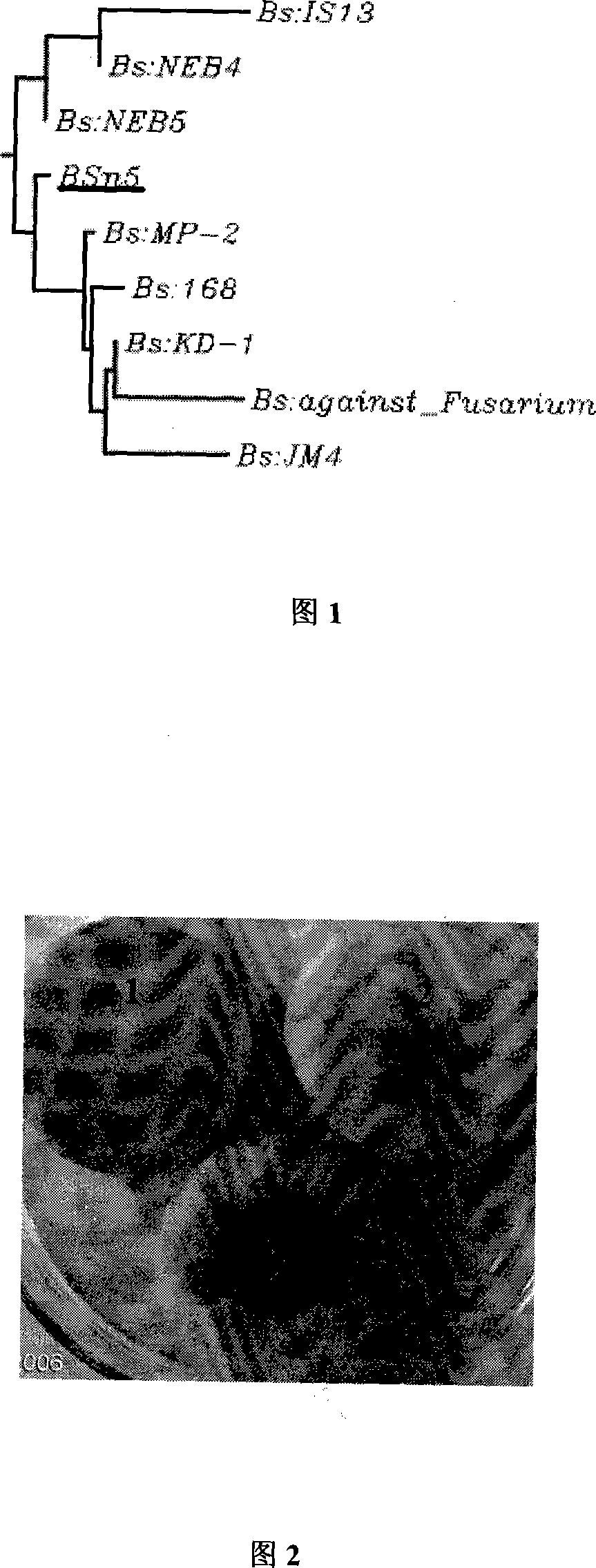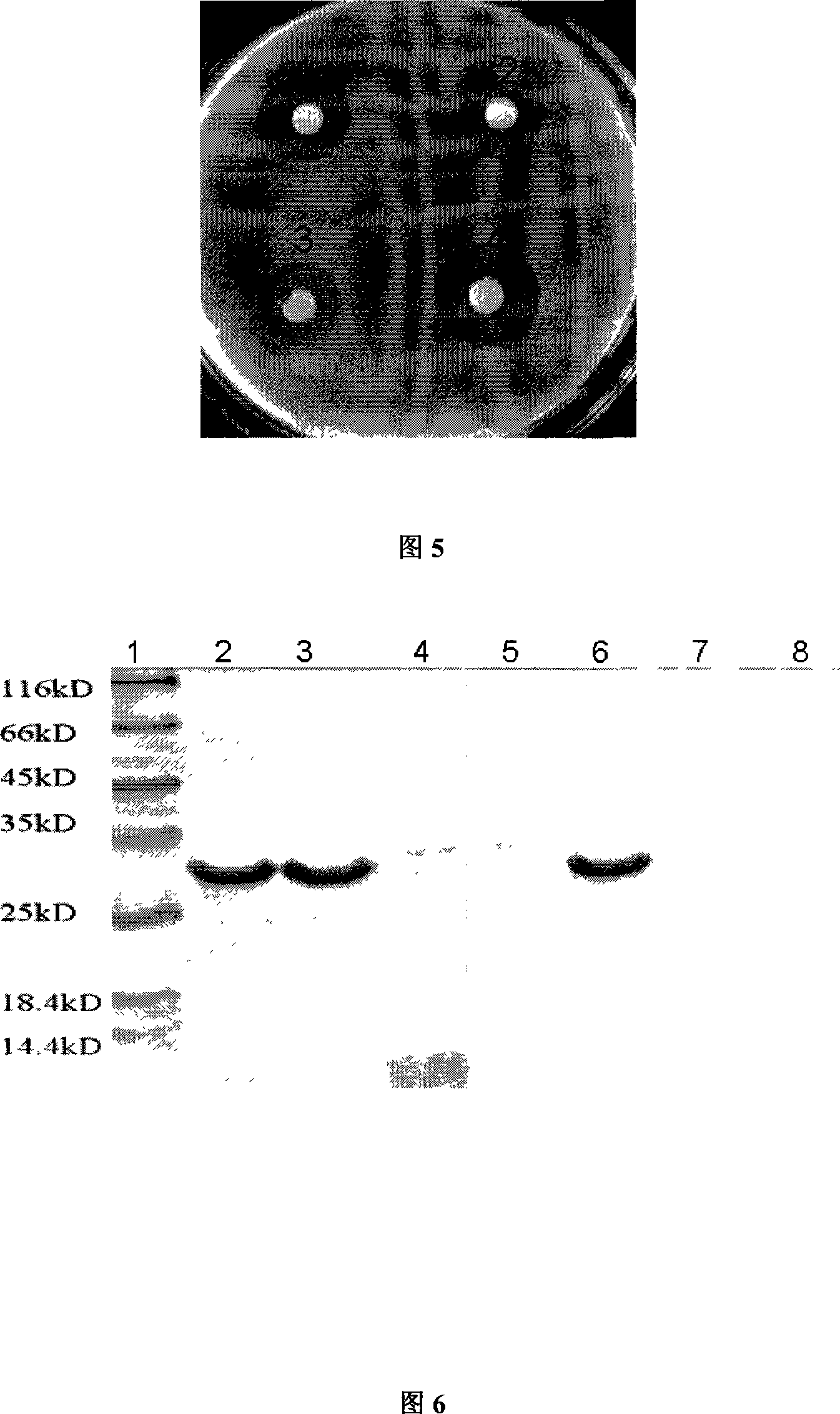Bacillus subtilis BSn5 with bacteriostasis active to carrot soft rot Erwinia and bacteriostasis protein APn5
A Bacillus subtilis and carrot soft rot technology, applied in the direction of bacteria, bacterial peptides, fungicides, etc., can solve the problems of large-scale damage, rapid spread, and difficult control
- Summary
- Abstract
- Description
- Claims
- Application Information
AI Technical Summary
Problems solved by technology
Method used
Image
Examples
Embodiment 1
[0030] 1. Isolation, identification and antibacterial activity detection of Bacillus subtilis BSn5 strain
[0031] 1. Isolation and screening of endophytic antagonistic bacteria against konjac soft rot
[0032] Rinse the tubers of Amorphophallus konjac under tap water for 15 minutes to clean the surface dirt. Afterwards, the tuber surface is sterilized, and the method is as follows: soak in 0.15% (m / v) mercury chloride solution for 30 minutes, then soak for 2 minutes with 70% (v / v) alcohol, and finally rinse 3 times with sterilized water to remove residual chemical reagents on the surface . Put the surface-sterilized tubers in sterilized water to peel off the skin, and then cut into about 0.5cm 3 Blot the surface moisture with sterilized absorbent paper, inoculate in Amorphophallus konjac callus induction medium (MS basic medium+3% sucrose+0.7% agar+NAA (naphthalene acetic acid) 0.5mg / L+6-BA (6-benzylaminopurine) 0.5mg / L, add water to 1L, pH 6, sterilize at 121°C for 30min)...
PUM
| Property | Measurement | Unit |
|---|---|---|
| molecular weight | aaaaa | aaaaa |
| diameter | aaaaa | aaaaa |
| diameter | aaaaa | aaaaa |
Abstract
Description
Claims
Application Information
 Login to View More
Login to View More - R&D
- Intellectual Property
- Life Sciences
- Materials
- Tech Scout
- Unparalleled Data Quality
- Higher Quality Content
- 60% Fewer Hallucinations
Browse by: Latest US Patents, China's latest patents, Technical Efficacy Thesaurus, Application Domain, Technology Topic, Popular Technical Reports.
© 2025 PatSnap. All rights reserved.Legal|Privacy policy|Modern Slavery Act Transparency Statement|Sitemap|About US| Contact US: help@patsnap.com



